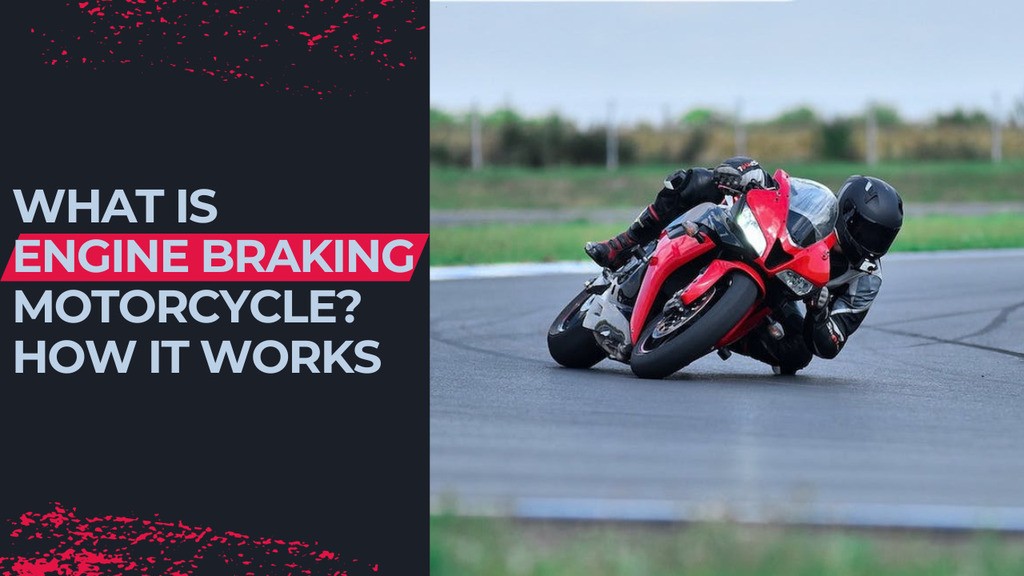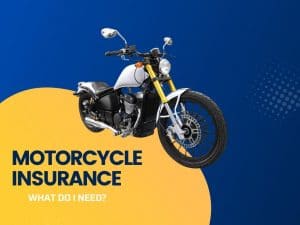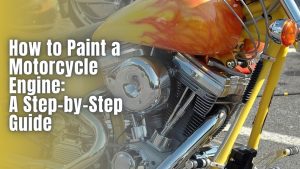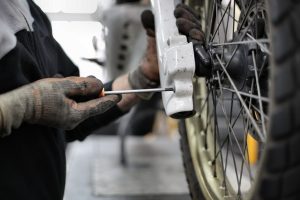🎯 Key Takeaways
- Engine braking uses your motorcycle’s engine resistance to slow down, no brake pads needed.
- It reduces brake wear, saves fuel, and improves control in corners and descents.
- Smooth downshifting and rev-matching are key to safe and effective engine braking.
- Engine braking works best in higher gears and helps stabilize the bike during deceleration.
Ever let off the throttle while riding and felt your bike slow down without touching the brakes? That’s engine braking. It feels like your motorcycle is gently pulling back. But what’s really happening?
Last week, I stumbled across a post from a new rider on Reddit who described it better than I ever could:
“One of the biggest notable differences I’ve felt … engine braking substantially slows down the bike. To the point where I don’t really use the brakes unless I’m coming to a clearly anticipated stop.” Reddit
What is engine braking motorcycle? It is more than just slowing down, it’s a skill used by pro riders and racers to stay safe and in control. In this blog post, I’ll share how it works, why it matters, and how to do it safely.
- What Is Engine Braking in a Motorcycle?
- How Does Motorcycle Engine Braking Work?
- Benefits of Engine Braking
- Is Engine Braking Safe?
- Is Engine Braking Bad for Your Bike?
- Engine Braking Techniques: How to Do It Right
- Advanced Riding with Engine Braking
- Common Myths and Misunderstandings
- Final Thoughts: Mastering Engine Braking
- FAQs about Motorcycle Engine Braking
What Is Engine Braking in a Motorcycle?
The term “engine braking” doesn’t mean the engine is applying the brakes, it means the engine’s compression and internal resistance are doing the slowing.
Engine braking happens when you close the throttle while the bike is in gear. The engine, instead of pushing you forward, starts working against your motion. This slows the rear wheel, helping the bike decelerate, without you even touching the brakes.
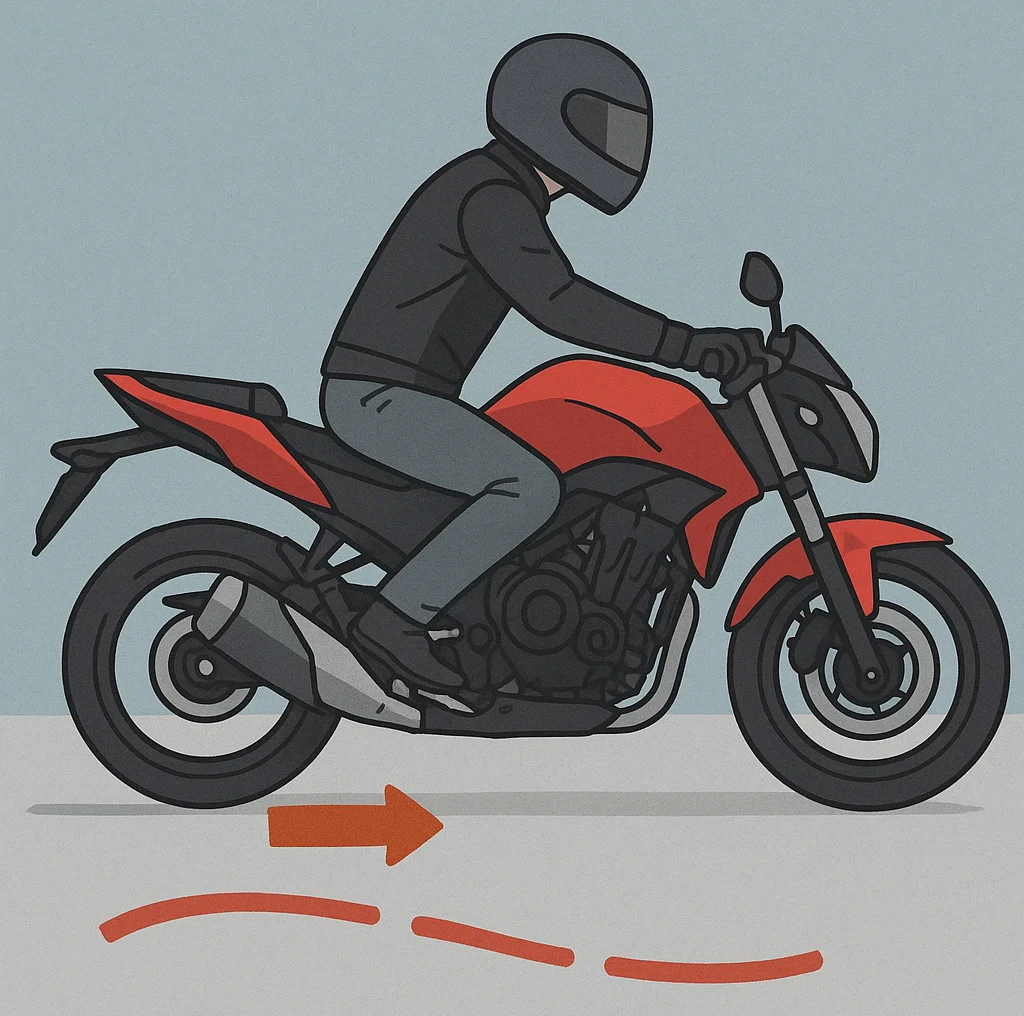
Here’s what’s going on under the tank:
When you roll off the throttle, you cut off most of the air and fuel going into the engine. The pistons still move, but they’re pulling against a vacuum. That vacuum creates resistance, which slows the crankshaft and, in turn, the rear wheel.
It’s like your engine turns into a brake.
In higher gears and at higher speeds, the effect is stronger. If you’ve ever downshifted too quickly and felt the rear tire shake a little, that was strong engine braking in action.
Engine braking is more pronounced on four-stroke engines compared to two-strokes, because of the greater internal resistance and vacuum created.
How Does Motorcycle Engine Braking Work?
Let’s simplify this step-by-step:
- You roll off the throttle while still in gear.
- Less air enters the engine.
- Pistons move up with little help, creating a vacuum.
- That vacuum pulls back on the engine.
- The engine slows down the drivetrain, which slows your rear tire.
This doesn’t use the brake pads or discs at all, it’s the engine doing the work. On steep downhills or while approaching a turn, this can help you stay in control without heating up your brakes.
Some modern motorcycles take it even further. Sport bikes and touring machines now come with engine braking control systems, ride modes, or slipper clutches that help manage how much engine braking happens, especially when downshifting aggressively.
Benefits of Engine Braking
Engine braking isn’t just cool, it’s smart. Here’s why riders use it:
1. Reduces Wear on Brake Pads
When your engine is slowing the bike, your actual brakes get a break. Less heat. Less wear. Longer life.
2. Keeps You in Control on Hills
Going downhill? Use engine braking in a lower gear. You won’t have to ride the brakes the whole way down. It keeps your speed steady and your brakes cool.
3. Helps Set Up for Corners
Racers use engine braking to slow down before turns. It helps them find the perfect speed for corner entry, without upsetting the bike’s balance.
4. Adds Safety in Stop-and-Go Traffic
In city riding, gentle throttle-off slowing can help reduce sudden brake grabs. It makes for a smoother, less jerky ride.
5. Improves Fuel Efficiency
During engine braking, most modern EFI (Electronic Fuel Injection) motorcycles cut fuel delivery completely, saving fuel while slowing down. No throttle = no fuel burn.
Is Engine Braking Safe?
Yes, if you do it right.
But there are some things to keep in mind.
Engine Braking Doesn’t Trigger Brake Lights
Cars or bikes behind you won’t know you’re slowing down unless you tap the brakes. This can be dangerous, especially in traffic. Always lightly press the brake lever to flash your lights if you’re slowing down with engine braking alone.
Slippery Roads = Careful Throttle Work
On wet, icy, or gravel roads, sudden engine braking can lock up the rear wheel. Downshift too fast and you might skid. Be gentle and smooth.
Don’t Use It for Emergency Stops
Engine braking is great for slowing down gradually. But if you need to stop NOW, use your actual brakes. Don’t rely on engine braking in a panic.
Is Engine Braking Bad for Your Bike?
Short answer: No, it’s not, as long as you do it smoothly.
Some riders worry it’ll damage the engine or clutch. But modern motorcycles are built for this kind of use.
Just remember:
- Rev-match when downshifting (we’ll explain below).
- Avoid letting the engine lug (low RPM in a high gear).
- Don’t downshift too early.
If you hear clunks or feel the rear wheel hopping, your timing might be off. But done right, engine braking is gentle and effective.
However, remember that engine braking is less effective at low RPM or in neutral, as the engine has less resistance to offer.
Engine Braking Techniques: How to Do It Right
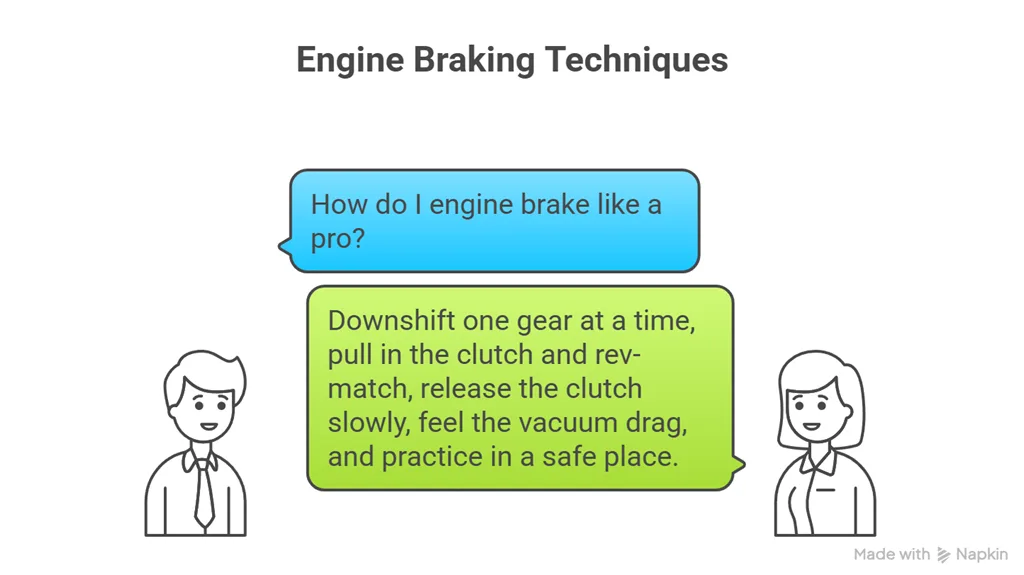
You don’t need fancy gear. You just need practice. Here’s how to engine brake like a pro:
1. Downshift One Gear at a Time
Don’t skip gears. Drop one gear, feel the pull, and then drop another if needed.
2. Pull in the Clutch and Rev-Match
Before releasing the clutch, blip the throttle to match the engine speed to the lower gear. This makes the shift smooth and avoids jerks.
3. Release the Clutch Slowly
Ease it out gently. If you let go too fast, the bike might jerk or skid.
4. Feel the Vacuum Drag
With every gear, you’ll feel the engine slowing the bike more. Learn how different RPMs affect your slowing power.
5. Practice in a Safe Place
Empty parking lots or quiet roads are perfect. Try slowing without touching your brakes and get used to the feeling.
Advanced Riding with Engine Braking
In Corners
As you approach a curve, downshift while gently braking. Let the engine help you slow into the turn, then roll on the gas as you exit. Smooth and controlled.
On Downhills
Shift into a lower gear. Let the engine hold your speed. No need to ride the brakes all the way down the mountain.
With Modern Bikes
If your bike has a slipper clutch, it helps prevent wheel hop when downshifting hard. Some bikes also let you adjust engine braking strength in the ride settings. Explore your manual!
Common Myths and Misunderstandings
Let’s clear up a few things:
❌ Engine Braking Wastes Fuel
Wrong. It actually saves fuel. When you roll off the throttle, most bikes stop injecting fuel into the engine entirely.
❌ It Hurts the Engine
Not if done right. Your bike is made for it. Just rev-match and be smooth.
❌ It’s Only for Racers
Engine braking is useful in daily riding, city streets, hills, highways. It’s not just for race tracks.
Final Thoughts: Mastering Engine Braking
Engine braking is a skill worth learning. It makes you a better rider.
Start slow. Find a quiet place to practice. Learn how your bike feels at different speeds and RPMs. With time, you’ll use engine braking without even thinking about it.
And next time you feel that gentle pull when you let off the gas? You’ll know exactly what’s happening and how to make the most of it.
FAQs about Motorcycle Engine Braking
Is engine braking loud? Will it annoy other drivers?
Engine braking may produce more engine noise as the RPMs wind down, but it shouldn’t be overly loud. Keeping RPMs out of the lower ranges and avoiding lugging the motor will minimize noise. Most other drivers are used to normal engine sounds from motorcycles.
Can I engine brake in lower gears too or just higher gears?
You can engine brake in any gear, but it’s most effective in higher gears where there’s more revs to transform into stopping power. Lower gears may not generate as much vacuum effect. Play around to see what feels best for your riding style and bike.
When should I use engine braking vs regular brakes?
Use engine braking primarily for slowing at a steady pace, like down hills. Save your hydraulic brakes for sharper slowing or stopping, or if you need to override the vacuum deceleration from the engine. Combining both smoothly is an advanced technique.
Is engine braking safe in wet or slippery conditions?
Use caution in slippery spots, engine braking can lock the rear tire if downshifted too abruptly. Stick brakes lightly to signal following vehicles since engine braking doesn’t activate brake lights.
Can engine braking damage my motorcycle?
No, when done correctly, engine braking won’t harm your bike. Just avoid over-revving and practice smooth, rev-matched downshifts to minimize component stress.

